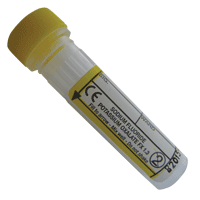Sample Submission
In order to ensure the best possible service may we request that, when submitting samples to the laboratory for analysis, the following advice is followed:
- Ensure that names and dates are entered on all specimen containers.
- Ensure that the relevant site information is on all specimens where site location would affect interpretation or potential treatment.
- Ensure that method of urine collection is noted.
- Ensure that practice details are entered on the submission forms.
- Check that lids are secure on tubes and that slides are sent in slide holders.
- Use our compliant P650 FOC packaging or, ensure that absorbent material is sufficient for potential spill of volume of sample being sent.
- Use our compliant P650 FOC packaging or, ensure that absorbent material is sufficient for potential spill of volume of sample being sent.
- If posting refer to our packing instructions before dispatch.
Please Email for advice if unsure about requirements. The following precautions should be noted:
- Please check that your sample tubes are in date.
- Labelling specimens allows us to check details against the submission form.
- Please use lab film NOT sellotape to wrap tube lids.
- Please ensure blood / fluid is decanted into sample tubes, not sent in syringes with needles.
- Please use the appropriate packaging materials, which will be provided FOC, as it is the sender’s responsibility to ensure that pathological specimens are sent in accordance with Royal Mail regulations.
Unsuitable Samples
Occasionally a sample is received which is unsuitable for the requested test; this may involve incorrect sample type or clotted, lipaemic or haemolysed samples.
Additional Requested Tests
Separated serum/plasma samples and EDTAs are kept under controlled conditions for six days; thus ensuring any further investigation required can be actioned.
Supplies
Supplies are FOC unless otherwise stated on the supplies form.
Blood Tube Identification
Please refer to our guide below as well as checking the sample requirements stated by the test in the price list.
SERUM 1.3ml (white top)
Allow the sample to clot, then centrifuge and separate serum from the clot and decant into a new plain tube prior to sending. RED CELLS are NOT needed for biochemical tests and presence may artefactually alter results.
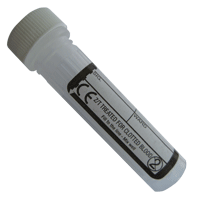
GEL BARRIER 1.3ml (brown top)
Allow the sample to clot, then centrifuge. The gel sits between the cells and serum protecting the serum from any haemolysis. The gel may interfere through possible absorption with the concentration of certain hormones. Some therapeutic drug concentrations are reduced when a sample is stored in a gel tube for greater than 2 hours.
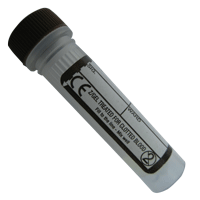
EDTA 1.3ml (pink top)
For Haematology EDTA is best for preservation of cell morphology. EDTA is the sample tube of choice for cytology (with a plain tube if culture is required). Please note: EDTA tube samples are not recommended for microbiology submissions as EDTA can inhibit bacterial growth.
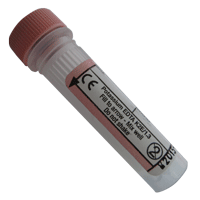
LITHIUM HEPARIN 1.3ml (orange top)
Heparin is an anticoagulant which prevents clotting. RED CELLS are NOT needed for biochemical tests and presence may artefactually alter results. Whole heparin is the preferred sample for short samples, e.g. exotics and fractious cats, as it can be used for cell counts with a fresh film. Heparin is not as good as EDTA for preservation of cell morphology.
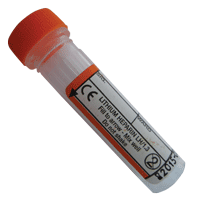
SODIUM CITRATE 1.3ml (lilac top)
Used for coagulation testing. It is essential that this tube is correctly filled as the anticoagulant to blood ratio is crucial. The sample may be centrifuged and separated citrated plasma placed in a plain tube. This must then be clearly stated on the form and tube. May also be used for D-Dimer. Separated and frozen citrated plasma must be used for vWF testing.
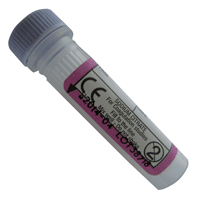
FLUORIDE OXALATE 1.3ml (yellow top)
A spun gel/separated serum sample is the preferred sample for glucose measurement. Spun gel/serum separation should be performed within half an hour of taking the sample. However if using Fluoride Oxalate the tube must be filled to the line.
